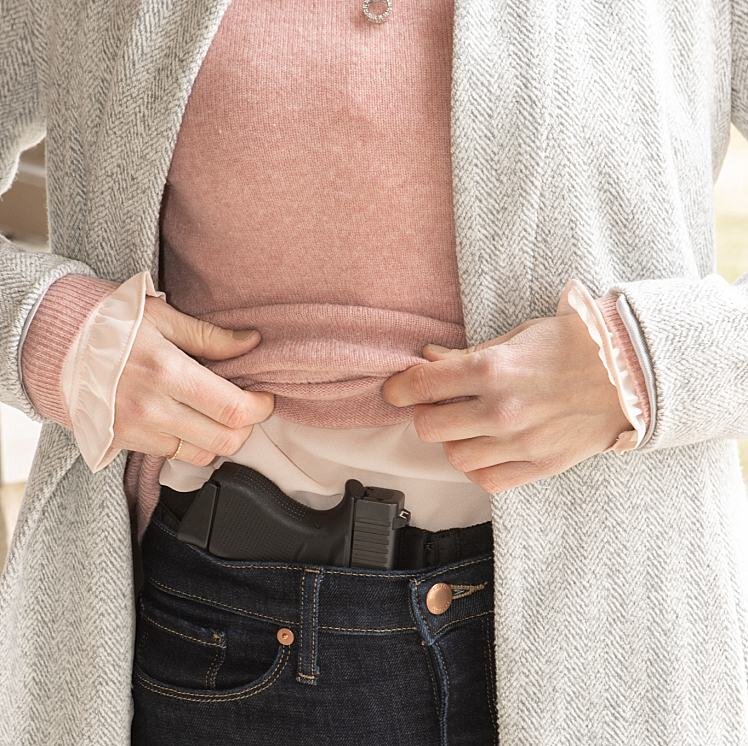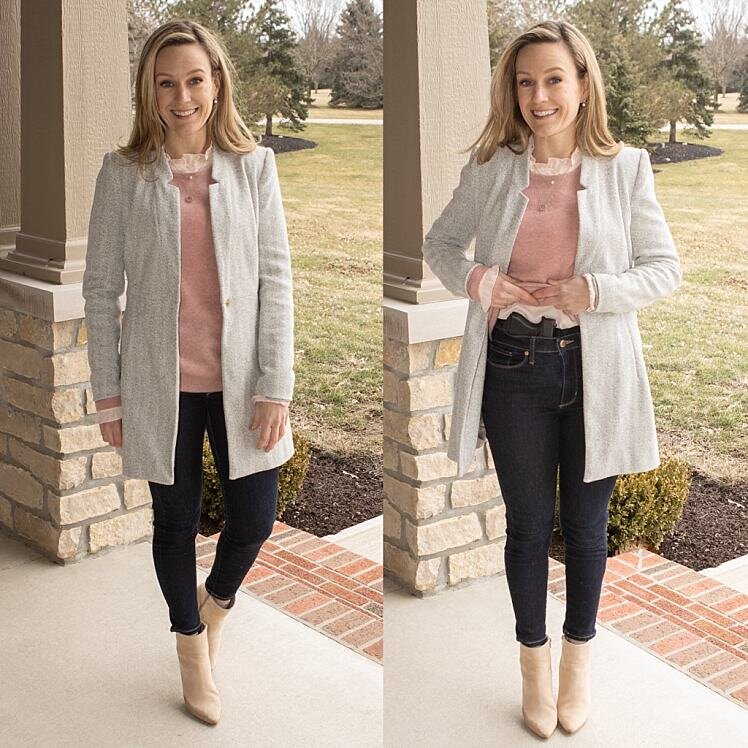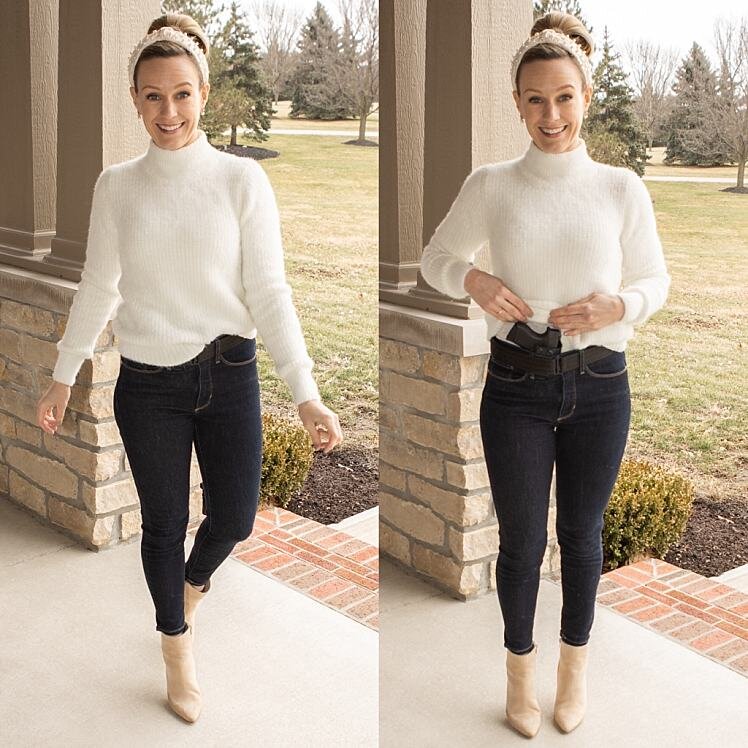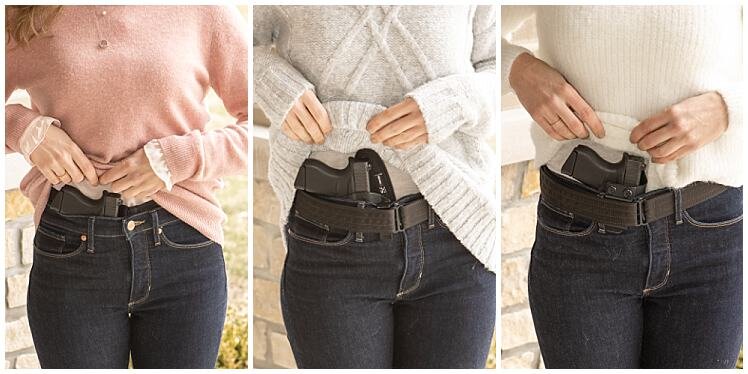A Surprising Second Look At The Glock 43 For Concealed Carry
In 2016, I decided to purchase my first 9mm firearm. After doing lots of research and trying several guns, I narrowed down my options to the Glock 43 and the M&P Shield. I liked them both but in the end I chose the Shield because it felt comfortable in my hands and offered an external safety where the Glock did not. After four years and a lot more shooting experience, I’m taking a second look at the Glock 43 and have noticed some amazing things that I missed before.
Features/specs
Caliber: 9mm
Capacity: 6 rounds, also comes with 6 round extended single stack magazine.
Action Type: Semi-Auto/ Striker fired
Trigger System: Glock’s trademarked, Safe Action
Trigger Pull: 24 N / 5.4lbs
Safety: no manual safety
Length: 6.26 in
Height: 4.25 in
Width: 1.06 in
Weight (with empty magazine): 510 g | 17.99 oz
Price: Suggested retail is not listed on the Glock website, but you can typically find one for around $450.00-$500.00 depending on options.
Shooting experience
I find the Glock 43 to be extremely easy to shoot. It feels comfortable in my hands, the trigger has a crisp pressure wall (definition below) and I can quickly focus my eyes on the sights. This combination makes the gun easy to shoot accurately and shoot consecutive shots quickly.
* If you aren’t familiar with the term “pressure wall,” all the triggers I’m familiar with don’t require the same amount of finger pressure through the entire length of the pull. The early part of the pull requires relatively little pressure but near the point of discharge the pressure required increases noticeably. This point is called the pressure wall.
Some triggers require more pressure than others and the distance you must pull the trigger after this point also differs from one gun to another. As I accumulated more shooting experience, I’ve come to appreciate triggers with a very distinct pressure wall and very little additional distance. This helps me recover more quickly in order to take the next shot.
Recently, I’ve been practicing to increase the speed of my shot strings which helped me see how well the Glock 43 stands out in this area. I felt my multi-shot performance with this gun was noticeably better than my experience with other guns. Had I known then what I know now, I may have chosen the Glock 43 over the M&P Shield! This proves the point that what you value in a handgun changes as you mature as a shooter.
During one of my trips to the range, I had a troubling experience with the trigger. It started feeling hard to pull and got progressively harder until I couldn’t pull it at all, even with the use of two fingers! Later I found this discussion on a sight called Glock Talk, which suggested a drop of oil may be needed, just under the connector hook so it can filter down to the trigger bar. After adding oil to this spot (without cleaning), the trigger was back to normal and I was able to shoot without further trouble during my next trip to the range.
Glock is known for their reliability, so I found this surprising, especially considering the gun had fired less than 1000 shots. A review of the manual did reveal that Glock recommends adding oil to that spot each time its cleaned, but there is no explanation of the consequences of not doing so other than a general statement about failure to clean your gun can affect its operation. Just to note, this gun has been cleaned with some regularity but I’ve never added oil to the spot in question. I don’t think this is significant as a safety issue, but rather something to be aware of. If you know about it, it’s easy to prevent.
A few other notes:
Ergonomics – The grip feels comfortable and the single stack magazine makes it very slim.
Mag Release – I’m able to release the magazine with my right (grip) hand but when inserting a new magazine, I must break my grip to avoid pinching the palm of my right hand.
Slide Tension- I was able to pull the slide back with ease but for someone with weak hands this may take some extra strength. To give a comparison, I find it easier to rack the slide on the Smith & Wesson EZ, and the Glock 43 is easier to rack than the M&P Shield.
Sights – I found them easy for my eyes to focus on. I often practice at 10ft but this gun was also very accurate at 20ft.
Trigger- As I mentioned before, the pressure wall is very easy to find and once there, you don’t have to pull much further to fire.
Recoil- The recoil isn’t exceptional one way or another, but I did notice that the muzzle doesn’t seem to bounce up as much as my Smith & Wesson, M&P Shield. This is another reason I was able to get my sights back on target quickly for a second shot.
Concealed carry experience
In recent months I’ve been carrying the SIG 365 which has a 10 round magazine. When practicing with the Glock 43 at the range, I was a little disappointed at how quickly I emptied it’s 6-shot magazine but on the flip side, I like the slender, single stack magazine. It’s much easier to conceal than previous Glock models, including the Glock 26 which is a similar height and length but is wider, due to the double stack magazine. However, as a petite woman who often carries a Ruger LCR (a much smaller gun), my perspective is that the Glock 43 is one of my larger guns.
To conceal some of these “larger guns” such as the Glock 43 or the M&P Shield, I like to use an elastic belly band that offers more compression for my fitted clothing. This allows me to wear a gun with a larger variety of styles, but the downside is that the trigger is not covered by hard material.
To ensure I’m safe while wearing “soft holsters” such as my belly band, I switch on the manual safety of the gun, however, Glock takes pride in the fact that they don’t have manual safeties. This makes sense because their guns are ready to shoot immediately upon drawing from a holster. It also means I only feel comfortable carrying the 43 in a hard, kydex holster. This does limit my style a bit, but I can still conceal the Glock 43 by “Dressing Around the Holster.”
Also, because it only holds 6 bullets, I think carrying an extra magazine is a good idea. You can do this by clipping a separate magazine carrier to your belt, or even better, finding a Kydex holster that holds both the firearm and extra magazine.
From left to right- Can Can Concealment Belly Band | Stealthgear USA Apendix Ventcore | MIC Systems Companion Holster
Pictured above, you can see three holsters I tried with the Glock 43. Since the gun does not have a manual safety, I felt more comfortable carrying it in one of the last two holsters, which have hard material covering the trigger.
break down The Gun
This video does a nice job of explaining hot to break down the Glock 43. The instructions are simple, and you don’t need any tools other than your hands.
As he mentions in the video, make sure the gun is UNLOADED and then you’ll need to pull the trigger before disassembling. After a several unsuccessful attempts, I realized I was pulling the slide too far back, which re-set the trigger and would not allow the slide to come off. Understanding this will make disassembly much easier!
Conclusion
When I first considered this gun, I was mostly concerned with how the grip felt in my hands, whether it had a manual safety, and how easily I could pull the slide back. Spending more time shooting has led me to appreciate more about the 43 such as the crisp pressure wall and minimal bounce from the muzzle during recoil. I absolutely love how this gun shoots!
I still wish the Glock 43 had a manual safety so I could wear it in soft holsters, but I understand why Glock chose not to include this. If I were to carry the 43 every day, I would make sure to use a holster with a hard trigger cover and a place for an extra magazine. I would also need to adjust my wardrobe a bit with a focus on Dressing Around The Holster.
“Chime-In!”
Have you ever shot the Glock 43?
If so, share your experience below!








